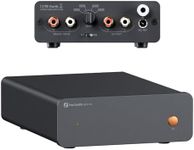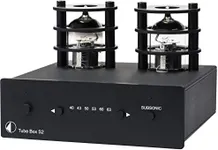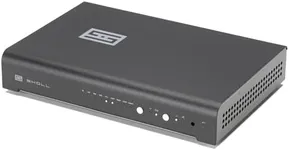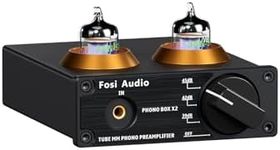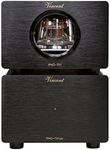Buying Guide for the Best Phono Preamps
Choosing the right phono preamp is essential for getting the best sound quality from your turntable. A phono preamp, also known as a phono stage, amplifies the low-level signal from your turntable to a level that can be processed by your audio system. When selecting a phono preamp, it's important to consider several key specifications to ensure it meets your needs and enhances your listening experience.GainGain refers to the amount of amplification the phono preamp provides to the signal from your turntable. This is important because the output from a turntable is much lower than other audio sources. Gain is typically measured in decibels (dB). For most moving magnet (MM) cartridges, a gain of 40-50 dB is sufficient. For moving coil (MC) cartridges, which have a lower output, a gain of 60-70 dB may be needed. Choose a phono preamp with the appropriate gain for your cartridge type to ensure optimal sound quality.
Cartridge CompatibilityCartridge compatibility refers to whether the phono preamp can work with moving magnet (MM) or moving coil (MC) cartridges. MM cartridges are more common and have a higher output, while MC cartridges are typically used by audiophiles and have a lower output. Some phono preamps are designed to work with both types, while others are specific to one type. Ensure the phono preamp you choose is compatible with your turntable's cartridge to avoid any issues with signal amplification.
Signal-to-Noise Ratio (SNR)The signal-to-noise ratio (SNR) measures the level of the desired audio signal compared to the level of background noise. A higher SNR indicates a cleaner, clearer sound with less background noise. SNR is usually measured in decibels (dB). Look for a phono preamp with an SNR of at least 70 dB for a good listening experience. If you are an audiophile or have a high-end audio system, you may want to look for an SNR of 80 dB or higher.
Input ImpedanceInput impedance is the resistance the phono preamp presents to the signal from the turntable. This is important because it affects the frequency response and overall sound quality. For MM cartridges, an input impedance of 47k ohms is standard. For MC cartridges, the input impedance can vary, but it is often around 100 ohms. Some phono preamps offer adjustable input impedance to fine-tune the sound. Choose a phono preamp with the appropriate input impedance for your cartridge to ensure the best sound quality.
Output OptionsOutput options refer to the types of connections available on the phono preamp to connect to your audio system. Common output options include RCA, balanced XLR, and USB. RCA outputs are the most common and are compatible with most audio systems. Balanced XLR outputs provide a higher quality connection with less noise, ideal for high-end audio systems. USB outputs allow you to connect the phono preamp directly to a computer for digitizing vinyl records. Choose a phono preamp with the output options that best suit your audio setup and needs.
Build QualityBuild quality refers to the materials and construction of the phono preamp. A well-built phono preamp will have a sturdy chassis, high-quality components, and good shielding to minimize interference and noise. This is important for ensuring long-term reliability and optimal sound quality. Look for a phono preamp with a solid build and good reviews to ensure you are getting a reliable and high-quality product.
